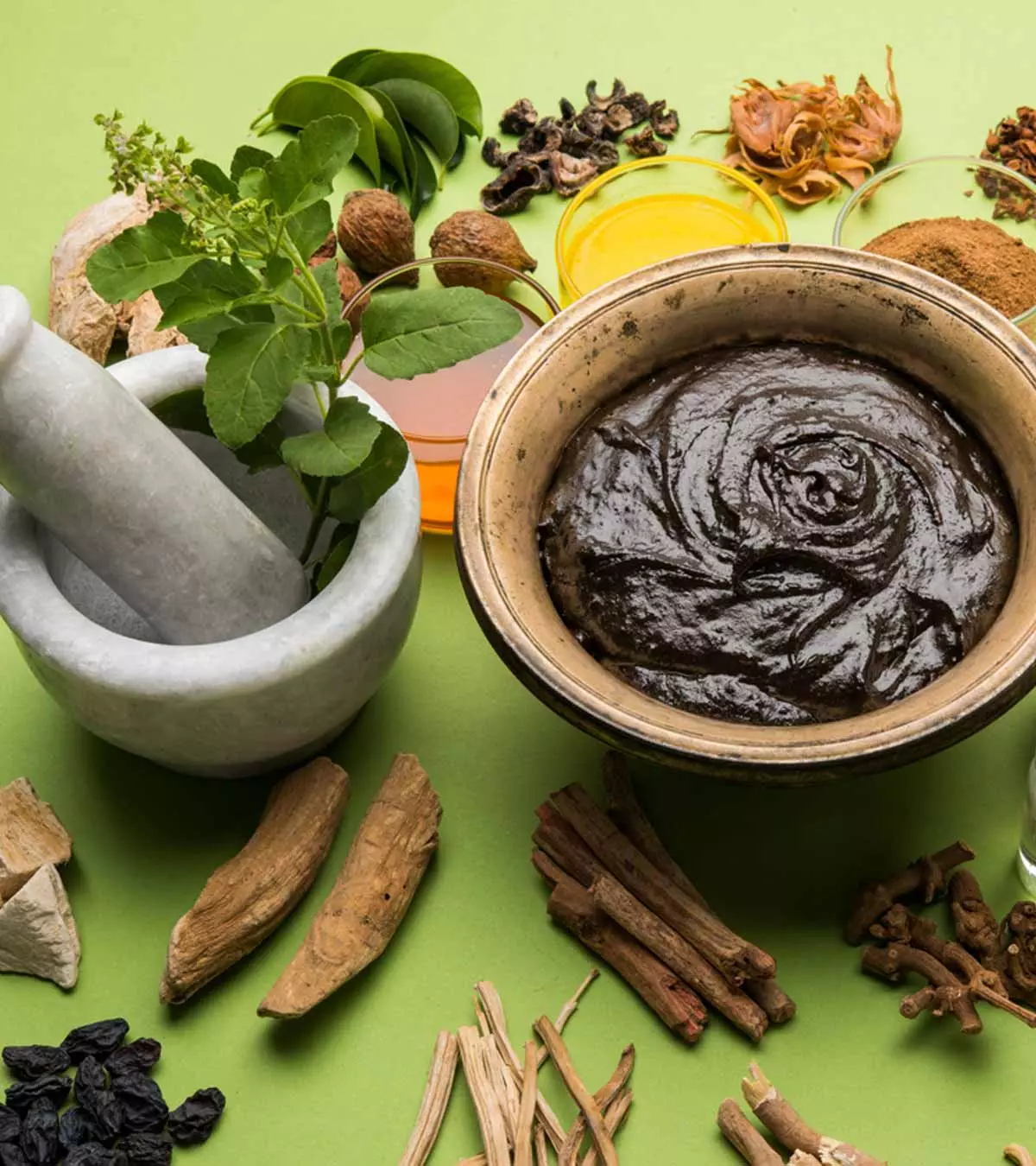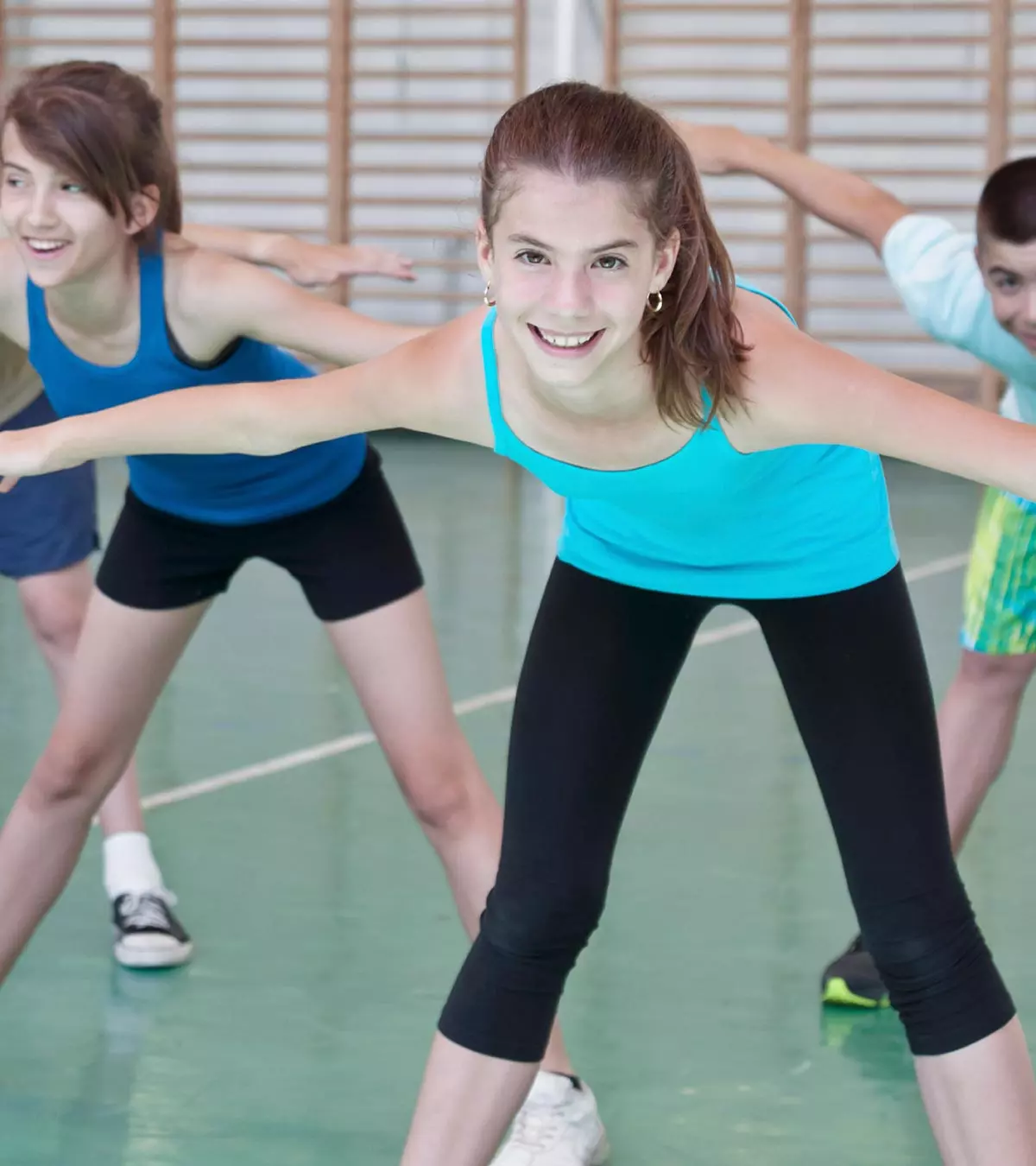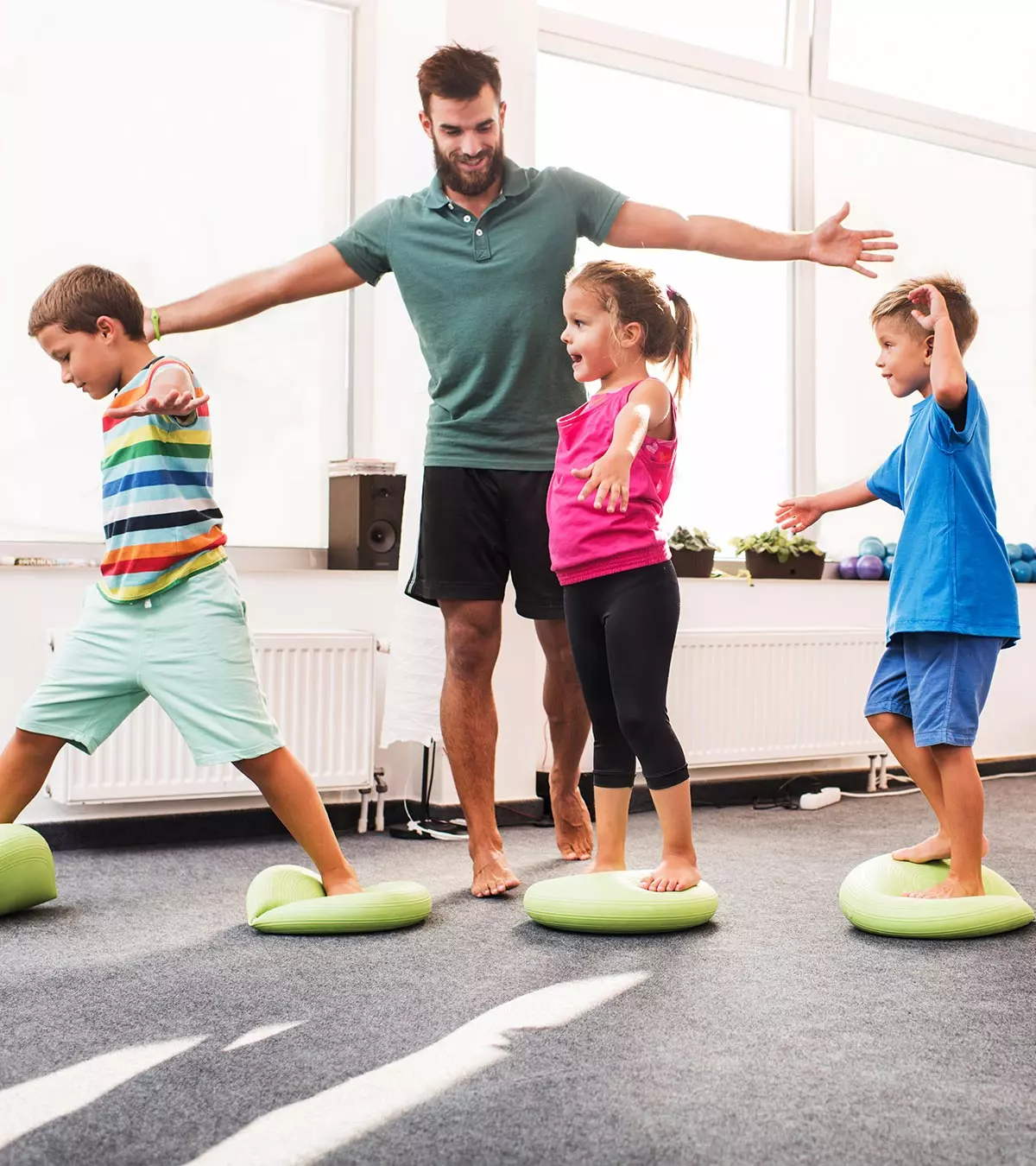
Image: ShutterStock
Aerobics is a form of exercise that combines strength training and stretching along with rhythmic movement. In this post, we tell you about the benefits of aerobics for kids and give you some easy exercises that you could try with your children.

The word “aerobic” is derived from the Greek words aero, meaning air, and bios, meaning life. Aerobics helps improve the efficiency of oxygen use and cardiovascular activity of the body. Thus, performing aerobics helps enhance oxygen circulation in the blood and improves heart health. Read on to know about a few types of aerobic exercises that you can try with your children.
 Did you know?
Did you know?Key Pointers
- Combining strength training, stretching, and rhythmic movement, aerobics improves the body’s oxygen use efficiency and cardiovascular activity.
- To increase their heart rate and breathing, children can engage in aerobic activities such as running, jumping rope, and skateboarding.
- Other options include speed walking, hiking, swimming, cheerleading, and dancing.
- Aerobics help maintain a healthy heart and lungs, weight, stronger bones and muscles, immunity, and fight depression.
Types Of Aerobic Exercises For Kids
Aerobics isn’t just limited to dancing in a professional studio. Any exercise that helps you breathe faster and increase your heart rate can be considered aerobic. In this section, we have listed down the different aerobic activities that your child can indulge in.
1. Running
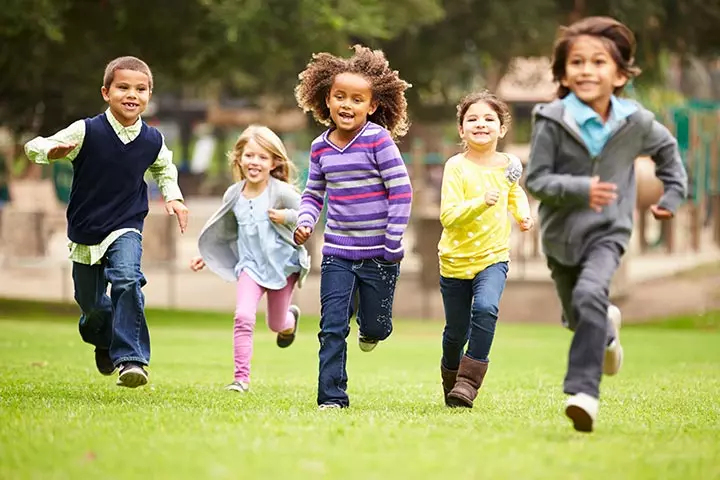
Soon after they learn to walk, they start running. That’s how much kids enjoy running. So why not begin with this easy and natural aerobic exercise for kids? You can take them to a track or a park and run with them every day or engage them in some fun running games for kids. Or you could make them run in your own yard. Wherever they run, make sure it is safe. And make it an everyday habit.
2. Chasing and running

If the kid does not want to run for the sake of exercise, make them play a game that needs them to run. Tag, for instance, is a game that involves chasing and running. You can also try games such as Capture the Flag, Red Rover, Spud, or just have a running competition. If you have a pet dog, taking the dog for a walk in the park offers lots of opportunities for chasing about. Ball games such as football, tennis, rounders, etc., can also be fun while allowing for increased physical activity.
3. Jumping rope

While girls play this the most, boys can try this aerobic exercise too. For this exercise, all you need is a skipping rope, and you are ready to go. You can also play this as a game with three people.
Hold either end of the rope in each hand and the rope behind you. Swing the rope above your head, and complete a 360-degree move, and jump before the rope hits your feet.
When there are three players, two people hold either end of the rope and swing it, and the third one jumps.
4. Skateboarding and rollerblading

Skateboarding and rollerblading help develop coordination skills that enable one to maintain balance while moving at high speeds. They are moderate aerobic exercises that allow you to exert yourself a little when you use force to propel yourself or use the strength of your body to move in different directions.
Skateboarding or rollerblading for at least 60 minutes a week will give you adequate exercise to stay healthy (1).
5. Bicycling

Cycling not only keeps you fit but also allows you to get from one place to another without creating a carbon footprint. You also have stationary biking, but kids may not enjoy it as much. Cycling works the lower body muscles and also pumps up your heart rate, especially if you go mountain biking or cycle on hilly terrains.
Fun fact: If you cycle for one hour on an electricity-generating bicycle, you can create enough energy to power your home for 24 hours!
6. Aerobic dancing

Jazzed with lively music, this form of aerobics is exciting and provides excellent flexibility. Step aerobics for kids involves a series of set movements that ensure a complete body workout and leave your kid sweating. There are several aerobic dance videos for kids that you can refer to for this.
7. Sports

Taking part in sports for kids, such as gymnastics, hockey, football, soccer, tennis, boxing, and circuit training, can also foster good sportsmanship in your child and help meet their weekly physical exercise needs. You can also encourage them to try water aerobics, which are group aerobic exercises done in shallow waters such as a swimming pool.
8. Speed walking

Walking at a brisk pace is an aerobic exercise. When you pick up a pace and walk fast, your heart beats and pumps blood faster. Fast walking is when you take quick, short steps for exercise. This is not the same as walking at an average pace or strolling.
9. Hiking
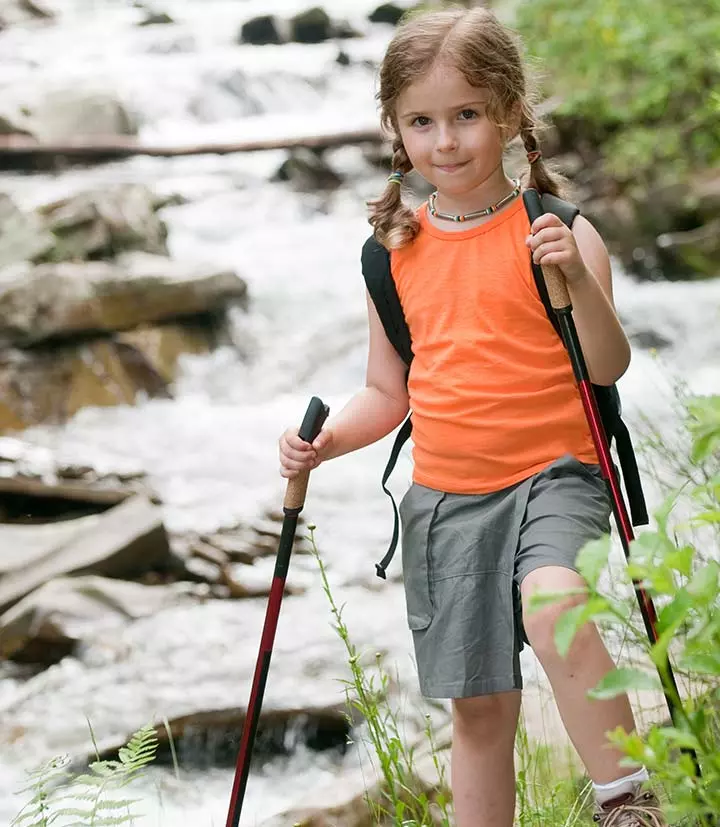
Hiking is climbing or walking on an inclined terrain such as a hill. When you hike, you apply pressure on your lower body (legs) to propel yourself forward, which improves your blood pressure and increases your heart rate. The result – by the time you reach the top of the hill or the hiking trail, you would be sweating.
You can take your kids on a hiking trip once or twice a week for good exercise.
Greta, a mother of four, says, “My kids love to hike. The boys can handle a 3-mile hike with ease. Even 4 miles doesn’t phase them too much as long as there are some snacks involved. Lilly (her daughter) can handle a hike, too… We began hiking earnestly when James was 3 and William was 1.
“Hiking with kids is like anything else, you just have to show them how much fun it is, and they’ll soon join right in. You have to help them build up their strength and stamina. You have to show them how to see things along the trail so it isn’t just a boring walk. Even Lilly points out wildflowers now or a bunny. The boys notice birds, plants, rocks, bugs, and wildlife. They love the adventure, the bend in the road, the joy of new discoveries,” she adds. (i).”
10. Swimming
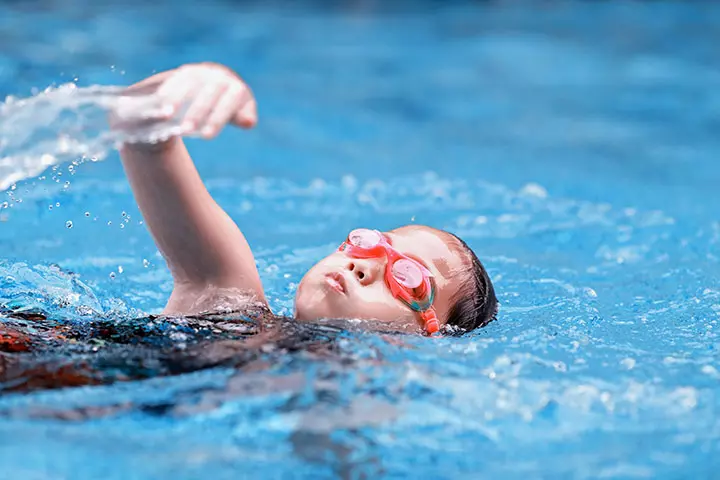
Swimming is one of the best aerobic exercises that makes use of the entire body. Also, an important life skill, this activity can help strengthen the child’s muscles and is less risky than other physical activities that could result in bone injury. Besides swimming, you can also try aqua aerobics or water aerobics that are organized by community health centers, clubs, or even a few schools.
11. Cheer-leading

Cheerleading could be a great activity for your child if they have confidence in their athletic abilities and enjoy performing dynamic routines that involve dancing, jumping, and chanting slogans to support a team.
12. House and yard work
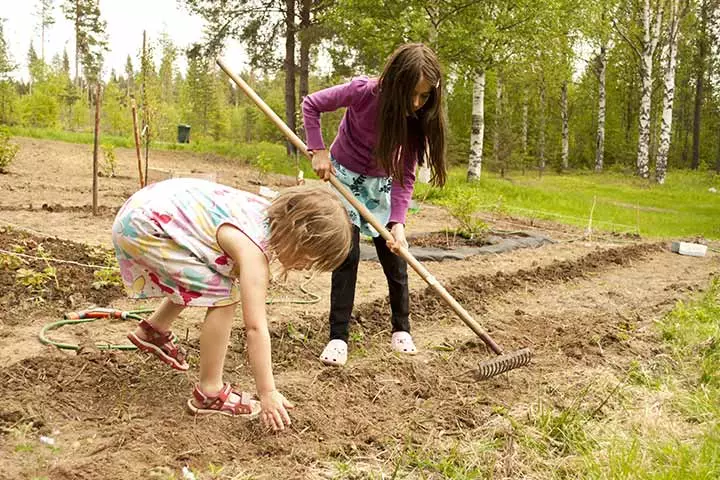
Nothing beats yard work like mowing the lawn, gardening, raking the leaves, and other household chores that exert you physically. Give the child routine tasks such as washing the driveway, mopping the floors in the house, moving the furniture, etc. But be cautious of muscle injuries while moving stuff.
This could be a way to make your kids active as well as teach them to be responsible.
13. Skiing

Skiing is similar to skateboarding and ideal for older kids. Teenagers living in snowy areas can try this sport which requires physical strength and agility to maneuver the body on the skis. Downhill skiing is an aerobic exercise when the skier is trying to propel the body and control movement solely using the strength of his legs and hands.
14. Dancing

Dancing – whether it is ballroom dancing, hip-hop, salsa or freestyle – is fun. When you dance, you move your body to match the rhythm of the aerobics music, which can be energizing. Sometimes, even ballroom dancing, which may seem slow, is aerobic in nature and helps in burning calories and in improving your cardio endurance.
15. Rowing or canoeing

Ideal for teenagers and adults, rowing, and canoeing engage your upper-body strength. The sport increases your heart rate as you move the oars in a quick motion to propel the canoe or boat ahead. You can try rowing an actual boat or canoe in the water, or you could get a rowing machine and exercise in the basement.
16. Hula hooping

Hula hooping for children is more than just a fun hobby; it’s a complete workout that promotes both physical and mental growth. The difficulty lies in learning the motion, which requires children to coordinate trunk movements, maintain stability, and incorporate flexibility into their movements all at the same time. Hula hooping engages core strength by using oblique, abdominal, and upper back muscles. In addition to encouraging proper posture, this improves endurance, which is essential for general physical fitness.
17. Frog jumping

Frog jumping for children is a fun and useful activity where children need to hop like frogs. Strength and coordination are improved by this exercise, which works important muscle areas like the thighs, calves, and glutes. Proper breathing throughout these jumps adds a mindful element to the activity, promoting overall well-being.
In addition to these, you can try other aerobic exercises and activities such as karate and ice skating. Another interesting activity is the ‘Suryanamaskar’ or Sun salutation yoga exercise that stretches and works the entire body. Whatever aerobic activity you choose, introduce it to the child slowly and gradually.
 Quick tip
Quick tipBenefits Of Aerobics For Kids
Not all kids are as active as they should be. Your child may be interested in reading, drawing, or playing with toys. But do they indulge in strenuous physical, heart-pumping activities such as a sport or dance activities for kids?
If your answer is no and you think your child does not get enough physical exercise, you should consider enrolling them in a physical education class (PE class) like aerobic exercise.
Research shows that many children and youth in the US fail to meet the recommended guideline of 60 minutes of physical activity each day. According to the US Centers for Disease Control and Prevention (CDC), less than 24% of children from 6 to 17 years meet this target. Hence, it is vital to encourage children to indulge in daily physical activity.
Continue reading to know more about the benefits of aerobics for kids.
1. Healthy heart and lungs
When you do aerobic exercises, more oxygen is required by the working muscles. As a result, your rate of breathing increases, which allows the blood passing through the lungs to take up oxygen at a faster rate. The heart rate also increases to pump more of this oxygen-rich blood to the working muscles. With regular exercise, cardiovascular fitness increases and this means that the heart muscle and lungs become stronger. People with high cardiovascular fitness have been shown to have greatly reduced risk for heart disease and diabetes and this is why regular exercise is recommended in countries around the world.
2. Keeps weight in check
Weight gain
occurs when you are consuming more energy (calories) from food than you are using up every day in normal body functions, digestion of food and physical activity and this is stored as fat in the body. Physical exertion burns more calories than mild exercises such as walking, so doing higher intensity exercise will increase the amount of energy burned up every day. Moderate to higher intensity exercise also teaches your body to burn fat. Regular aerobic exercise along with a healthy diet prevents the child from gaining excess weight and becoming obese.
3. Strengthens muscles
According to a study, previously unfit people had increased skeletal muscle protein production after four weeks of aerobics (2). This means that in addition to burning fat, physical exercise, and particularly strength type exercise, can help to build strong muscles. As mentioned above, aerobic exercise also helps strengthen the heart muscle, which is one of the most important muscles in the body.
4. Strong bones
One of the ways to strengthen your bones is to do weight-bearing exercises such as dancing or aerobics. When you encourage your child to do aerobics, you might be helping them to build stronger bones.
5. Detoxification of the body
Your body removes toxins through sweat, tears, and urine. Aerobics results in sweating, which might help the body flush out toxins, boost energy, cleanse the liver, improve skin health, and contribute to overall wellness.
6. Build immunity
Moderate aerobic exercises with proper rest could make your children stronger, although it is not known how. Some theories suggest that physical activity such as aerobics flushes out the bacteria through the airways. It is also believed that exercises change the concentration of white blood cells and disease-fighting antibodies (3), which play a major role in the kid’s immunity levels.
7. Fight depression
A collection of research on humans states that a single exercise helps decrease negative mood states and increase positive mood states while reducing the psychological and physiological response to acute stress, possibly leading to improved self-esteem (4).
8. Improve social skills
Aerobics is a group activity done indoors or outdoors that promotes team-building. When your children go to aerobics classes, they meet a lot of children, which can help them work on their socializing skills as well, especially if they are shy or apprehensive about socializing.
9. Better academic performance
A fit body can help you develop a fit mind. Studies have shown that regular aerobics can help children focus better and make them less impulsive. It also boosts the production of brain-derived neurotrophic factor, which is critical for brain cell growth (5).
10. Aerobics is fun!
Regular exercises such as walking or working out in a gym can seem tiresome even for adults. When you want your kids to workout, you need to think of something interesting such as aerobics. Besides aerobic exercises, a class of aerobics dancing every day can be an excellent idea.
Regular physical activity like aerobics supports children’s health, emotional well-being, and social skills while promoting a lifelong positive attitude toward fitness. It is important to inculcate the habit of exercising early on in kids and you can start with fun aerobics for children six years old and above.
Despite the several benefits that aerobics and other exercises provide children, a gradual decrease in the amount of physical activity untaken by children has been observed in recent years. As per the data collected by the National Physical Activity Plan, after 2007, the amount of time American children, both girls and boys, spend doing any physical activity decreased each year.

Physical activity undertaken by children
Source: The 2018 United States Report Card on Physical Activity for Children and Youth; National Physical Activity Plan/NSCHFrequently Asked Questions
1. What is the age for aerobic exercise in children?
According to the CDC, children may start indulging in physical activities through active play between the ages of three and five (8).
2. How can I make exercise more appealing to my child?
Make exercising enjoyable for your child by turning it into fun activities like dance-offs or musical chairs. Incorporate family-friendly games like backyard sports or simple fitness challenges, and let them pick their favorite activities once in a while. Adding variety makes fitness feel like play, helping your child develop a lifelong love for staying active.
3. Which exercises help children lose weight fast?
Short and energetic activities throughout the day may help children stay active. Apart from this, climbing frames, playing on swings, or riding a scooter may be suitable for young children. Older children may participate in dancing, swimming, or martial arts to lose weight and stay fit (9).
4. What are the disadvantages of aerobic exercise for children?
Aerobic exercises are considered beneficial. However, overexercising may sometimes cause body pain. If your child complains of discomfort, let them stop exercising and see a doctor (7).
5. How many days a week should children do aerobic exercise?
The CDC recommends that children and adolescents indulge in moderate-to-vigorous exercises for 60 minutes at least thrice a week (8).
If you want to encourage your child to exercise and engage in fun activities, you may consider aerobics for kids, as it is a beneficial recreational activity to promote your child’s physical activity and enjoyment. If your kid does not show much interest in daily exercising, you may try enrolling them in an aerobics class or have them practice simple aerobic exercises such as dancing, sports, running, etc., under your supervision. Aerobics may benefit your child’s health and promote several life skills. So, go ahead and begin with a short exercise routine and motivate your child to follow it every day. Once they get the hang of it, you may increase the duration and intensity.
Word of caution: Some children may have congenital heart diseases, lung ailments, hypertension and metabolic abnormalities. So, a doctor’s opinion should be sought before enrolling a child for aerobics to ensure that the exercise is safe for them.
Infographic: How Do Aerobic Exercises Benefit Children?
If you wish to include regular exercise in your child’s daily routine, aerobic exercises, such as jumping, dancing, running, and swimming, can be fun. In addition to the enjoyment, these exercises promote various other health benefits in children, some of which are included in the infographic below.
Some thing wrong with infographic shortcode. please verify shortcode syntaxIllustration: Aerobics For Kids: 10 Benefits And 15 Exercises
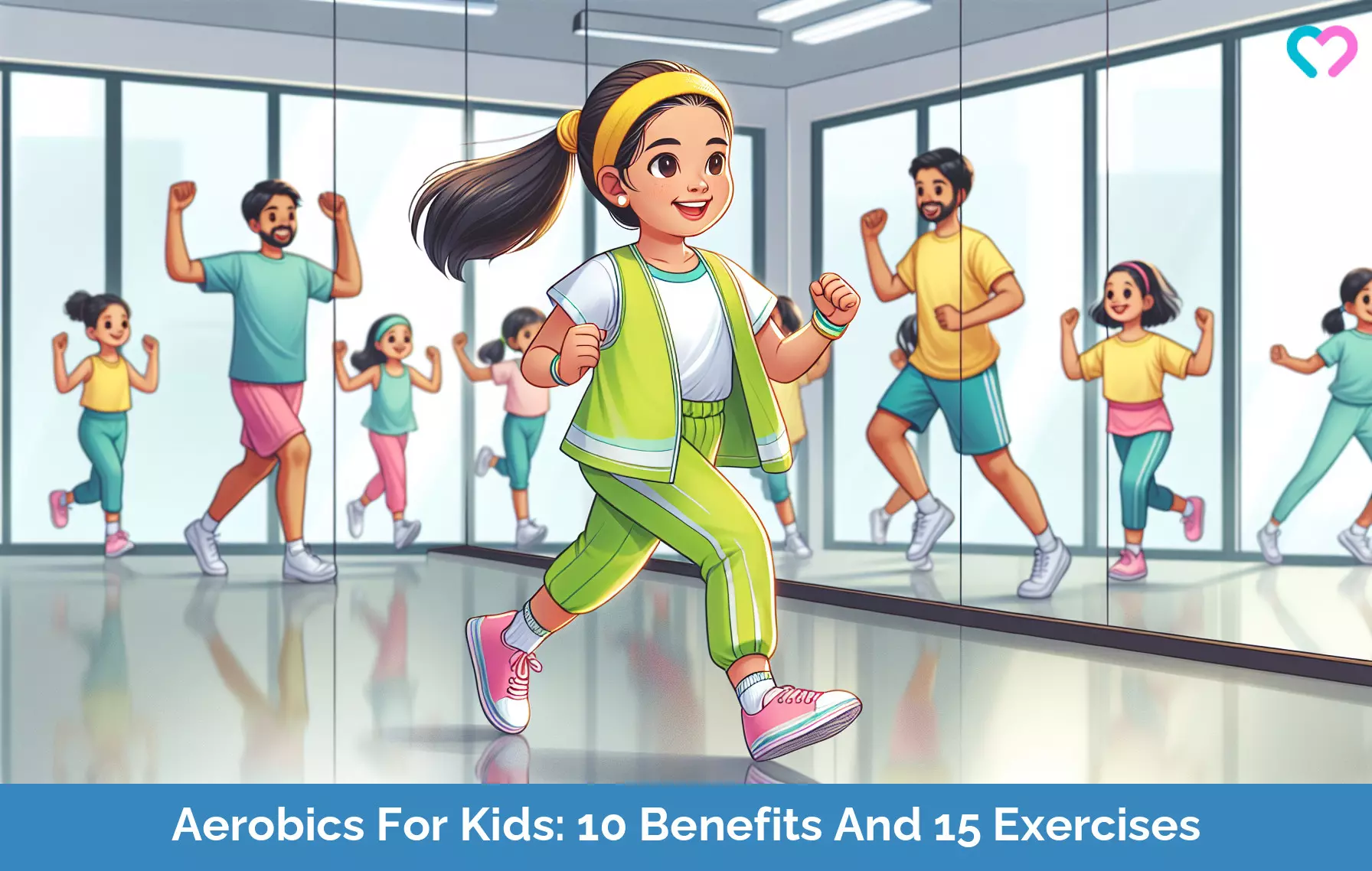
Image: Dall·E/MomJunction Design Team
Engage your children in a lively 20-minute aerobic workout! Suitable for all ages, no equipment required. Prepare to break a sweat and enjoy a fantastic time!
Personal Experience: Source
MomJunction articles include first-hand experiences to provide you with better insights through real-life narratives. Here are the sources of personal accounts referenced in this article.
i. hiking with kids: some tips and the Santa Margarita river trail.https://lillyandthebrothers.blogspot.com/2010/03/hiking-with-kids-sometips-and-santa.html
References
1. Skate Your Way to Family Fun; American Cancer Society
2. Matthew A. Pikosky; Aerobic Exercise Training Increases Skeletal Muscle Protein Turnover in Healthy Adults at Rest; The Journal of Nutrition
3. Exercise and immunity; Medline Plus; US National Library of Medicine
4. Julia C. Basso and Wendy A. Suzuki; The Effects of Acute Exercise on Mood, Cognition, Neurophysiology, and Neurochemical Pathways: A Review; NCBI(2017)
5. Matthew T. Schmolesky, David L.Webb, and Rodney A. Hansen; The Effects of Aerobic Exercise Intensity and Duration on Levels of Brain-Derived Neurotrophic Factor in Healthy Men; NCBI(2013)
6. Melissa I Carter, Pamela S Hinton;Physical Activity and Bone Health; NCBI(2014)
7. 11 ways to encourage your child to be active; Healthy Children
8. What You Can Do to Meet Physical Activity Recommendations; Centers for Disease Control and Prevention
9. What can I do if my child is overweight? NHS
Community Experiences
Join the conversation and become a part of our nurturing community! Share your stories, experiences, and insights to connect with fellow parents.
Read full bio of Dr. Shaon Mitra
Read full bio of sanjana lagudu
Read full bio of Swati Patwal
Read full bio of Dr. Joyani Das













